Cannabis Glossary: Letter E
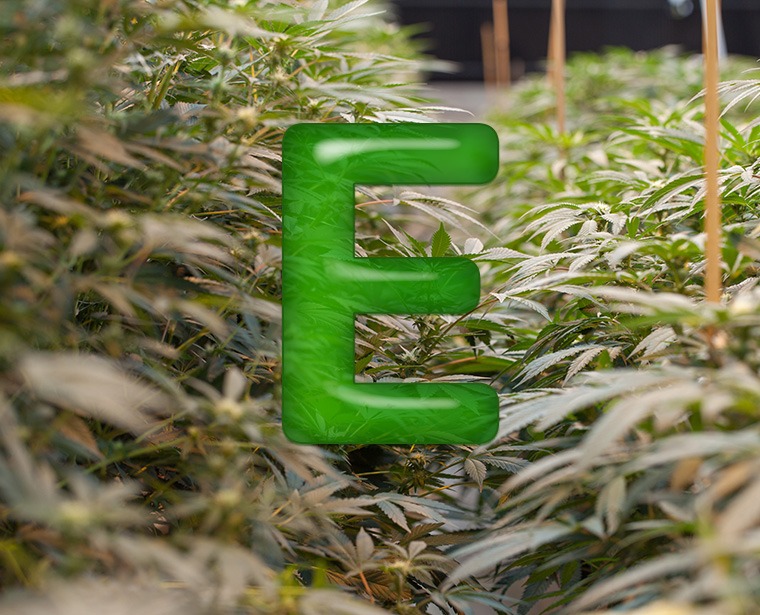
Ebb and flow systems
Ebb and flow systems are popular hydroponic growing systems in which a nutrient solution is pumped to the plant roots at regular intervals. The plants are placed in an inert planting medium such as rock wool or expanded clay and in a lattice pot. Typical ebb and flow systems use a pump to supply the roots with nutrients and water. Gravity causes the nutrient solution to return by itself.
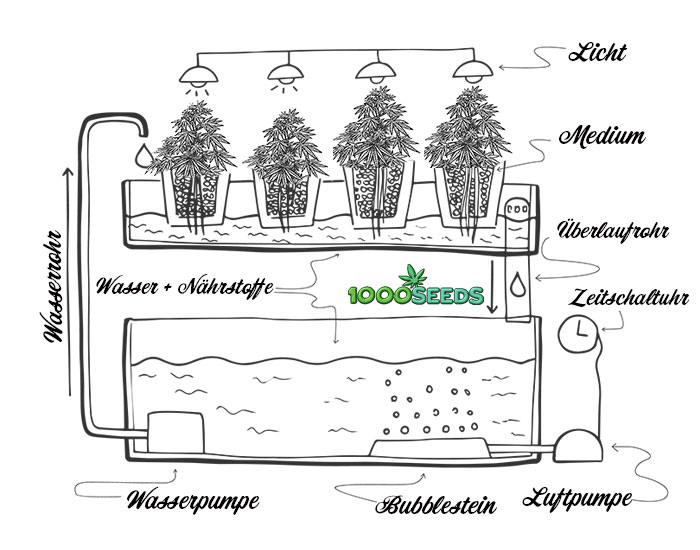
The medium itself must not contain any nutrients in this system, i.e. soil and various soil mixtures are not suitable for this cultivation method. The system requires little maintenance, the set-up is simple and the entire method is very efficient overall. For hydroponic cultivation indoors or in a greenhouse, the ebb and flow system is often the cheapest and simplest system. It can be used for cultivating just a few plants, but also finds application in large grow facilities. Ebb and flow systems mainly consist of a grow table with drainage to the nutrient tank, a nutrient tank, an overflow pipe and a water pump and air pump.
If you want to learn more about growing in ebb and flow systems, we recommend the following article:
EC value
Electrical conductivity (EC) refers to a simple method that growers use to determine the overall health of the substrate or nutrient solution. With electrical conductivity it is possible to check the balance and quality of nutrients as well as the pH in the nutrient solution. Consequently, electrical conductivity is used to measure the proportion of nutrients available in a nutrient solution. This is particularly necessary in hydroponic cultivation. Here are the recommended EC values for the different stages of plant development:
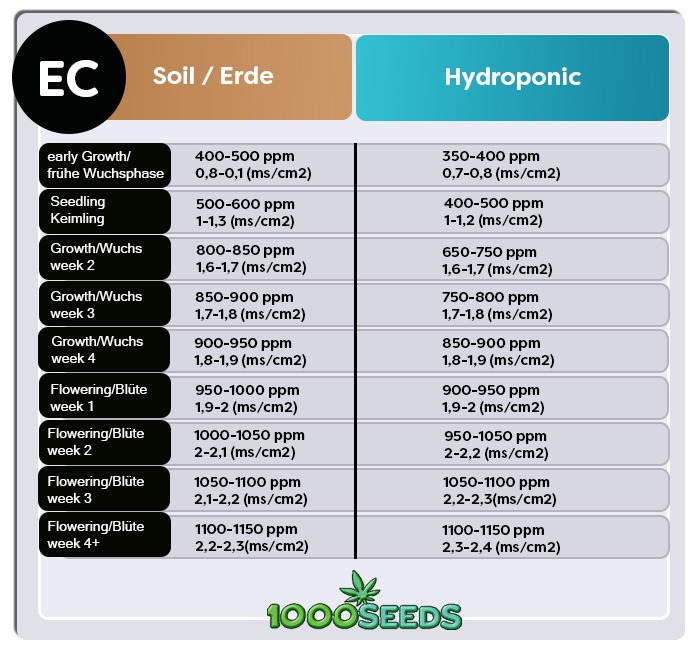
However, measuring the EC value does not make sense for all types of cultivation and is not always possible. With the EC value, for example, non-ionic components cannot be detected. It follows that EC measurement cannot be used for organic cannabis cultivation. In this case, the strength of the solution may be higher than the actual amount indicated by the electrical conductivity.
EC meters are used to measure the electrical conductivity of nutrient solutions. This allows the indoor grower to determine the amount of total dissolved nutrients in ppm (parts per million). Some manufacturers make meters that can measure both pH and EC.
You can read more about the EC value here:
E-Liquid
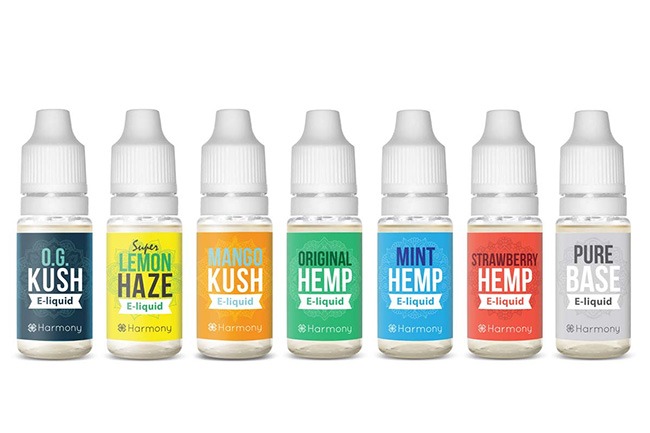
E-liquid is a flavoured liquid used in electronic cigarettes. The vapour produced in electronic cigarettes is generated by heating this liquid. E-liquids often consist of propylene, glycol, glycerine and flavourings. Some liquids contain nicotine or oh cannabis or cannabinoids. Cannabis and CBD e-liquids are popular, discreet and a very effective way to consume cannabis. In Europe, only e-liquids containing CBD are currently available and legal. In the USA, e-liquids containing THC or other cannabinoids are also filled into cartridges and distributed.
Emerald Triangle
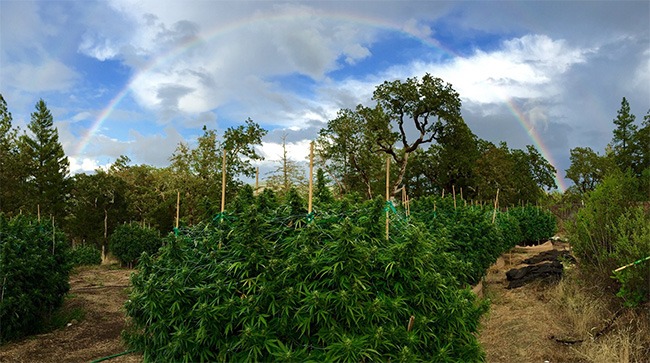
The Emerald Triangle consists of three counties in Northern California and is the largest cannabis producing region in the United States. The three counties are called: Mendocino County, Humboldt County and Trinity County.
Cannabis enthusiasts have been growing cannabis in the Emerald Triangle since the 1960s and it has even become a way of life in this region, with many of those living there being directly or indirectly connected to the cannabis industry. There has been a huge boom in the legalisation of cannabis in some states in the USA and also in these regions.
Geographically, the area offers very good conditions for growing marijuana outdoors. The region is close to the Pacific coast in Northern California and has everything you need to grow good weed. The temperature and sunlight per 24-hour cycle are ideal. The Emerald Triangle now owes a significant portion of its economic output to the cannabis industry.
Endocannabinoid system
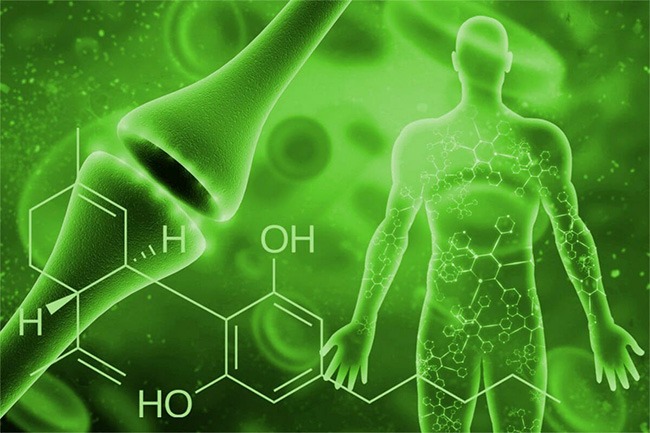
The endocannabinoid system consists of the body's cannabinoid receptors. In humans and animals, the endocannabinoid system (ECS) is a group of endogenous cannabinoid receptors that are present throughout the body, but are more concentrated in certain areas than others. In mammals, the cannabinoid receptors or endocannabinoids that make up the ECS are located in the brain and throughout the central and peripheral nervous systems. The receptors consist of neuromodulator lipids and their receptors.
The ECS is also known as the body's "own" cannabinoid system. It is involved in a variety of bodily processes, such as appetite, pain perception, mood, memory and mediation of the psychoactive effects of marijuana.
Two primary endocannabinoid receptors have been identified: CB1 and CB2. The CB1 receptors are predominantly found in the brain and nervous system, as well as in peripheral organs and tissues. A major endocannabinoid is 2-arachidonoylglycerol (2-AG), which is active at both cannabinoid receptors, along with its own mimetic phytocannabinoid CBD. 2-AG and CBD are involved in the regulation of appetite, immune system functions and pain management.
The cannabinoids of the cannabis plant directly affect the body's endocannabinoid system. Endocannabinoids stimulate the body's natural cannabinoid receptors (CB1 and CB2 receptors). The cannabis plant itself also uses its own natural cannabinoids to promote overall health, disease resistance and growth. The plant's cannabinoids even protect the plant's leaves and flowers from harmful ultraviolet rays. It is thought that the cannabinoids in the cannabis plant, the endocannabinoid system and the cannabinoid receptors in the human body may all work together to prevent, treat and even cure certain diseases. Research is currently being conducted into exactly how the body's endocannabinoid system works and the potential benefits of cannabis for the treatment of certain diseases.
Read more about the endocannabinoid system here:
Epsom salt
Epsom salt, also called Epsom salt, helps cannabis plants stay healthy and provides them with sulphur and magnesium naturally. Epsom salt is magnesium sulphate and has a structure like coarse salt. Epsom salt has many positive properties and is also used in cosmetic products such as scrubs and bath salts. At the same time, it is used for muscle pain, colds and migraines.
For the application on cannabis plants you should use Epsom salt from the pharmacy or from our grow shop. This is especially suitable for plants and it is free of fragrances and other additives. Epsom salt is difficult to overdose and easy to use. It is water soluble, can also be used in hydroponic systems and is purely natural. The micronutrient makes the uptake of nitrogen (N), phosphorus (P) and potassium (K) possible. Especially in hydroponic cultivation, but also in cultivation on soil, a magnesium deficiency can occur. An additional administration is then necessary to ensure a strong, green growth of the leaves and plant. If you want to achieve high yields, the use of magnesium is an important prerequisite.
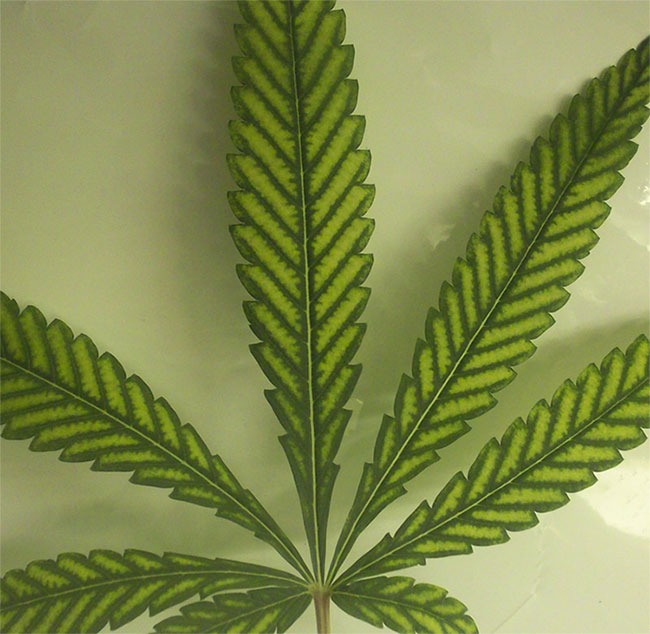
A magnesium deficiency shows itself in yellowed leaves, with the leaf veins being omitted.
Advantages of Epsom salt (Epsom salt):
- Ensures strong, healthy and green growth
- Plays an important role in the production of chlorophyll
- it strengthens the cell walls and makes plants resistant
- important for the formation of seeds
- Increases yields
- supports mother plants
In addition to magnesium, Epsom salt provides sulphur, which, like magnesium, is responsible for the increased absorption of NPK. Furthermore, sulphur is involved in the production of amino acids, vitamins and enzymes. Epsom salt helps mother plants with a long vegetation period to stay healthy and productive.
If the pH of the soil is above 7, Epsom Salt helps to get the problem back under control.
-
Add 1 tablespoon to 6 litres of irrigation water
A low dose of Epsom salt (1 tsp to 5 L) helps seeds to germinate and accelerates root formation of cuttings and seedlings. Cuttings of cannabis varieties that are generally difficult to clone have a higher success rate.
Earth
Soil is mostly a mixture of decomposed organic material (humus), minerals, liquid and countless microorganisms. Soil is an important medium for plant growth and it can store water. The amount of minerals contained, the texture, fertility and composition of the soil can vary greatly from place to place.
Soil, consisting of living organisms, beneficial fungi and bacteria, is a key component for the successful cultivation of crops and cannabis plants. In addition to the components already mentioned, soil contains varying amounts of rock particles such as sand, clay and silt, depending on the region.
There are different types of soil. A soil can be either salty, muddy, peaty, clayey or sandy. Each soil has a different ability to store water and a different air permeability. Sandy soils, for example, can only store a small amount of water, while soils with a high clay content can store a lot of water. The most optimal soil type is the loamy dark soil because it has a good drainage capacity and offers the roots enough air to develop.
The soil and the soil in which cannabis plants are grown are an important basis for the development of the plants and good yields. Indoors, it is recommended to use pre-mixed soil mixtures from well-known manufacturers such as Plagron, BioBizz or Canna, to name but a few. Ready-made planting substrates usually contain additional perlite to improve soil aeration and already have the optimal pH value. It is almost always a bad idea to shovel soil from the garden into the planter to use it for indoor growing. Soil from the garden or from the next best field path will certainly not produce good grass. It usually contains many pests, larvae and pathogens that would then spread rapidly in the grow room and the composition is also far from optimal. A soil that proves to be particularly fertile and ideal in the garden does not automatically have to be suitable for indoor cultivation. Dolomitic lime can help stabilise the pH value of the soil.
By the way:
-
The ideal pH value of the soil is between 6 and 7.
Everything about soil and earth can be found here:
Soilless substrates
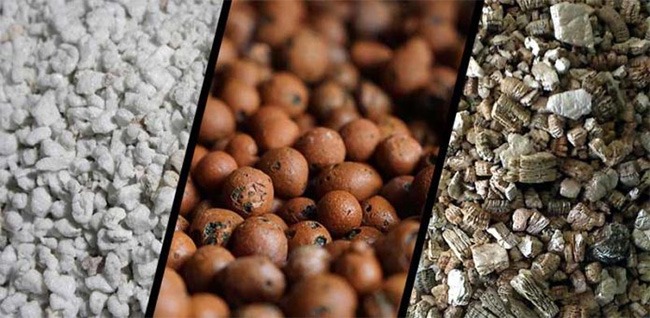
Soilless substrates are used in hydroponic cultivation and as aggregates to improve the water storage capacity and aeration of the soil. Unlike soil, they contain no nutrients, are sterile and have been used in gardening and agriculture for many decades. Soilless substrates are mostly composed of: Clay, pumice, rock wool, vermiculite, perlites, sand or coconut fibres. In hydroponic cultivation with soilless substrates, the fertiliser concentration, the pH value and other important parameters can be precisely controlled. These substrates have an optimal structure, the right water storage capacity and the appropriate drainage.
The pH value of soilless substrates is generally between 6 and 7.
Harvest time
The right harvest time is crucial when it comes to achieving the desired effects. Depending on the respective variety, flowers that are ready for harvesting show certain signs on the pistils and trichomes. This tells you when the right time to harvest has come.
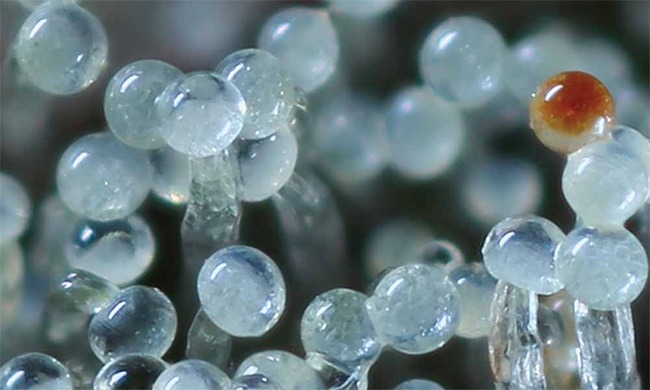
In general, indicas flower for about 8 weeks and sativas for 10-12 weeks. The exact time of harvest can only be determined by analysing the trichomes with a magnifying glass or microscope. The darkening of some or many hairs is not necessarily a reliable sign of ripeness. The trichomes should have reached a certain size and look like mushrooms on a stalk with a round ball. At the beginning these "balls" are clear, then they become cloudy and milky. From this point on, they can be harvested. If you like it more intense and relaxed, wait until a large part of these balls have turned amber.
Learn more about the right time to harvest:
Yield
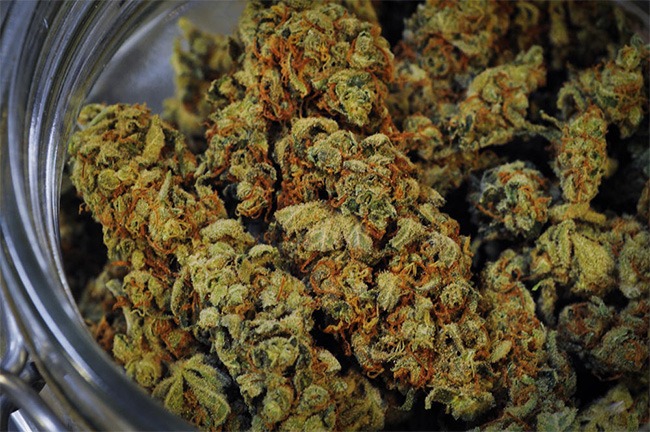
Yield is the amount of all buds harvested. Normally, the dried buds are meant. The amount of yield is determined by the genetics of a plant and the growing conditions. Depending on the variety and phenotype, cannabis plants have different yields, flowering times, terpene and cannabinoid content. The yield can be increased with the help of different Plant training methods can be increased.
ESL lamp
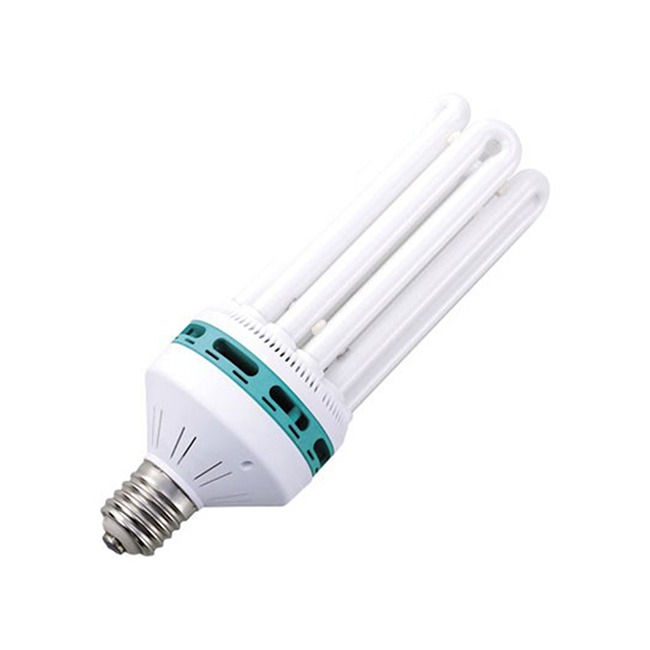
ESL lamps are energy-saving lamps that are mainly used in the growing phase and when raising cuttings. If they provide the right light spectrum, they can be a good choice for the first weeks of growing. When the plants grow larger, the illumination is no longer sufficient and a change to LED lighting or NDL becomes necessary. ESLs generate very little heat, so the plants can (and should) be brought very close to the lamp.
Essential (cannabis) oils
Essential cannabis oils are produced by distilling the flowers or leaves and contain ingredients and terpenes that are useful for therapeutic and cosmetic purposes. Cannabis essential oils are used in aromatherapy and can be vaporised. Essential cannabis oils have a wide range of applications for numerous diseases and symptoms such as pain, appetite, skin problems, headaches and many more.
Ethanol (C2H5OH)
Ethanol is a simple alcohol that is often used as a solvent for the production of cannabis concentrates. Cannabis extracts made with ethanol can be used in edibles, cosmetic products and oilbongs or consumed in a joint. Ethanol is considered a very efficient, safe and at the same time simple solvent. It is important that ethanol is used for cannabis extracts without denaturing, which is sometimes done for tax reasons. Otherwise, your end product may taste incredibly bitter and become undrinkable.
Ethanol is safe like CO2 and efficient like butane. However, ethanol concentrates also contain chlorophyll, which tastes like fresh grass and brings with it a bitter taste. Pure cannabis concentrates, on the other hand, are usually amber in colour. With the help of various processes and filtering methods, the chlorophyll can be filtered out of the ethanol concentrate, making the product even purer.
Learn more about extraction with ethanol:
Eucalyptol
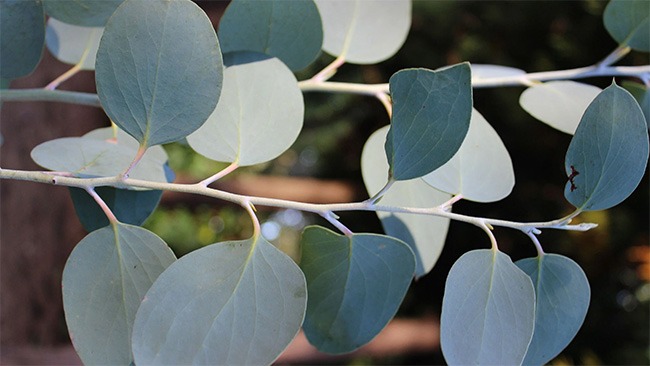
Eucalyptol is a naturally occurring compound often found in plants with fragrant foliage. It is one of the many terpenes that can be found in cannabis plants. Besides cannabis, eucalyptol is also found in eucalyptus, basil, wormwood and rosemary. The taste is spicy and ethereal. The terpene has been a much-used insect repellent for centuries and is also used for various medicinal applications. It has anti-inflammatory and antioxidant properties and is often added to mouthwashes or toothpastes.
Different cannabis strains have different levels of eucalyptol. Most strains have very little of it, but some are known to have particularly high concentrations of eucalyptol. Super Silver Haze, Girls Scout Cookies and Bubba Kush are known for a particularly high eucalyptol content.





